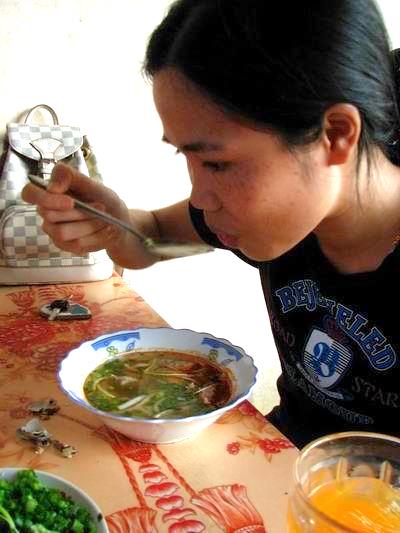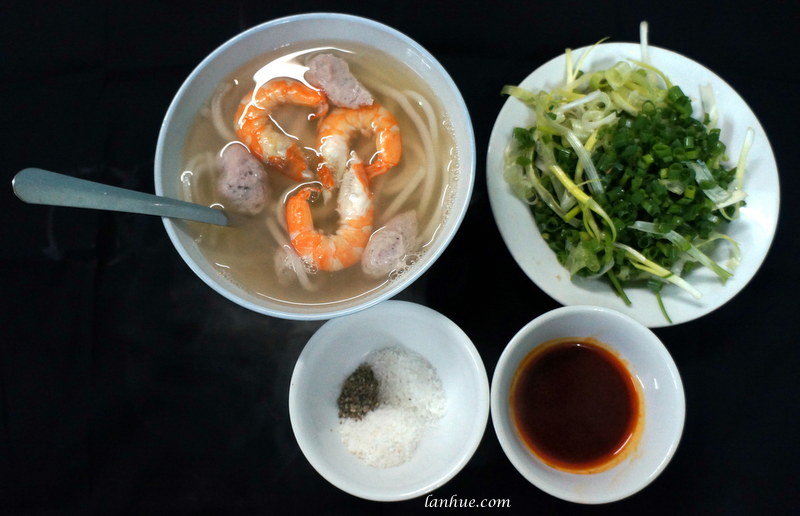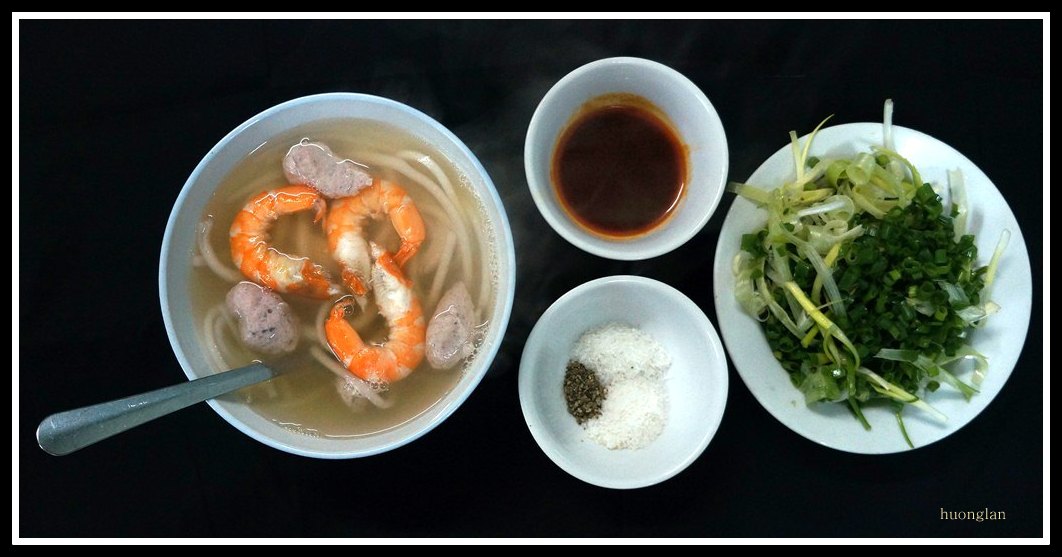
On the way to Bao Vinh old town, there is one restaurant located in an narrow alley on Đào Duy Anh Str. It’s very famous among the goodies and young people. This is an only-one-dish restaurant and its specialty is bánh canh Mụ Đợi (Ms. Wait’s Noodles). Some says Mụ Đợi might be the name of the owner. The others says its nickname come from the fact that diners always have to wait for a long time to be served. I’m not sure which one is correct or both is but I never try to find out. All I care is that bánh canh Mụ Đợi is always unique.
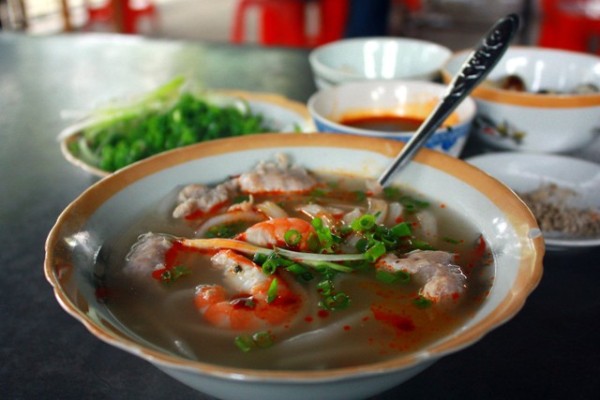
The Bánh is flat noodles made of rice and cassava paste. It’s freshly made at the restaurant. This explains why it takes so much time to have one steamy bowl of bánh canh. The Canh is the shrimp broth. Besides, there are peeled whole shrimps and/or meat balls to make the bánh canh complete.
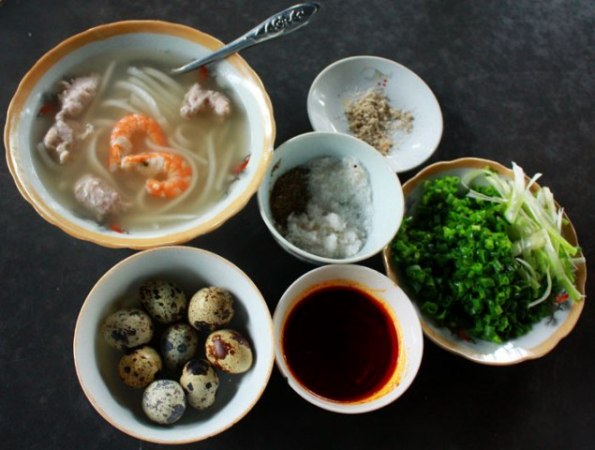
Unlike other kinds of bánh canh which are ready to eat once they are served, bánh canh Mụ Đợi involves you in the last step of serving. A dish of chopped spring onion, another tiny dish of salt, pepper and MSG (you’ll be shocked how much the Huế people still love adding MSG into their food), and a small bowl of red chilly paste are accompanied with a bowl of bánh canh. Diners with different tastes can decide which spices and how much to add into their bánh canh. I can only start to have my bánh canh when I’m sure everything I need is in there: tender bánh, steamy canh, pink shrimps, tasty meat balls, fresh spring onions, hot chilly paste, a little salt and black pepper. I don’t know why I add both hot red chilly paste and black pepper into my bánh cánh although both of them are hot. Well, to make my bánh canh look good is one thing, the other is that I always like the taste of both of the spices. They are just “same same but different”!
A side dish served with the bánh canh is boiled quail eggs. You can eat them while waiting for the bánh canh or you can dip them into the bánh canh. Of course, it’s not easy to sit waiting for your bánh canh while people at the nearby tables are enjoying steamy and tasty bánh canh and keeping repeating how yummy it is. I love peeling the tiny quail eggs, cutting it into two with a spoon, dropping them into the broth then spooning a half of the quail egg together with some broth, putting the whole thing in my mouth, and slowly chew the tender egg yoke, egg white and the savory broth together.
Although I only eat bánh canh as a snack or a light meal, I have two bowls of it (10,000 VND/small bowl; 15,000VND/large bowl; 20,000 VND/special bowl) whenever I find myself in a restaurant of Bánh canh Mụ Đợi. There are three Bánh canh Mụ Đợi restaurants in Huế now, among which the one on Đào Duy Anh Str. is the oldest.
Bánh canh mụ Đợi 1: 40 Đào Duy Anh Str. (on the way to Bao Vinh old town)
Bánh canh Mụ Đợi 2: 71 Nguyễn Trãi Str. (inside the Huế Imperial City)
Bánh canh Mụ Đợi 3: Ngô Gia Tự Str.
